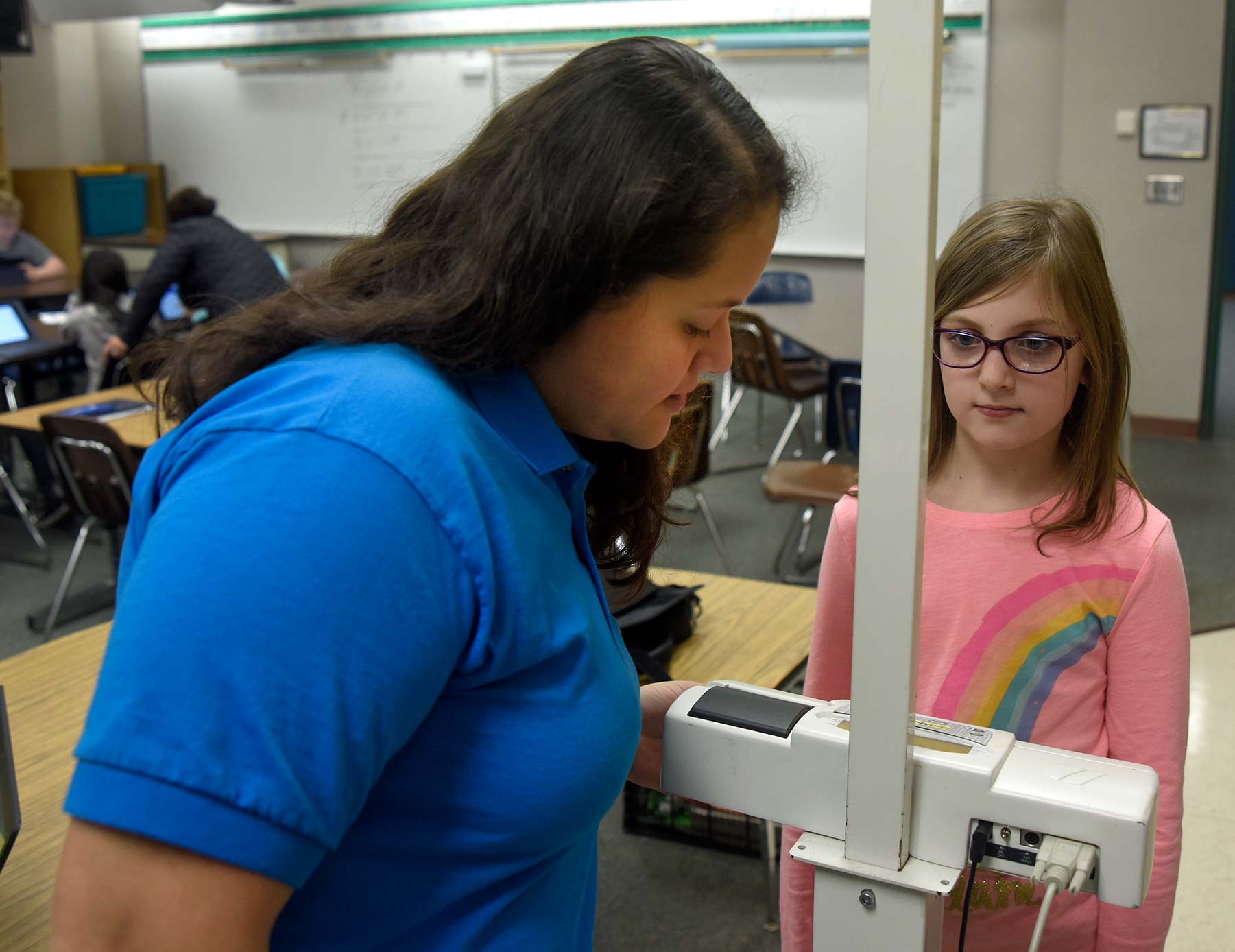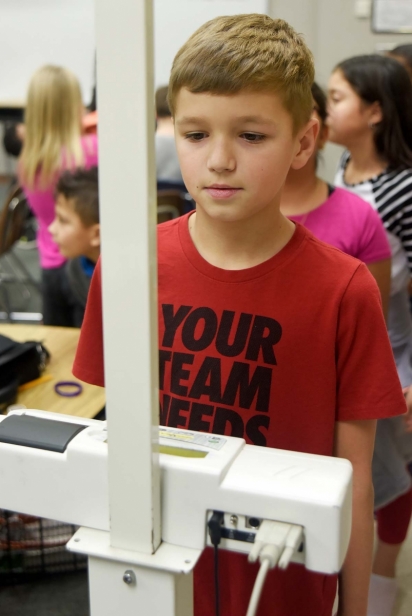Healthy Hearts: Elkhart County kids get tools to shape their future
How many fourth-graders do you know who can tell you their BMI (body mass index)? How many check nutritional labels for calories, added sugar and other nutritional info before having a snack? How many do you think are in the habit of telling their parents to sub in fruit and veggies for lunch instead of processed, pre-packaged foods?
Liliana Quintero, the executive director of the Northern Indiana Hispanic Health Coalition (NIHHC), is working to create a generation of them.
In 2012, she saw an opportunity: The Indiana Minority Health Coalition was funding new initiatives to combat childhood obesity. She looked at different curricula from existing programs across the country but found none that fit the multicultural approach needed to reach families in the growing Hispanic communities in and around Elkhart County.
So she went to work writing her own curriculum—with some help from pediatricians, doctors, educators and community members, and using guidelines from the American Heart Association—and in 2014 started a program called Healthy Hearts. It’s a holistic, bilingual, science-backed program, laser-focused on lowering childhood obesity rates.
Each school year the instructors of the Healthy Hearts program spend six weeks with a classroom of fourth-grade children, helping them develop new habits around nutrition and exercise. In the six years since its creation, Healthy Hearts has taught hundreds of children in fourth through sixth grades at 14 Title One schools in Elkhart and Kosciusko counties in Indiana, giving them the facts and skills they need to make healthier choices for a lifetime.
The original goal of the program was to see significant changes in students’ BMI within three years. In 2014, the program’s pilot year at Warsaw Community Schools, data showed students’ BMI already decreasing within one year. And the results have been similar as the program has expanded into Elkhart and Goshen schools.
“Usually we start with 21% overweight and 27% obesity levels for our fourth-graders,” Quintero says. “Based on our logic model, reductions in BMI were expected in year three. National research demonstrates that a 1% reduction in BMI lowers the number of diabetes cases by 2.4 million. Our program is already showing excellent results, as BMI among students in year three has dropped 4%.”
One of the main reasons the program is working so well, Quintero said, is the attention paid to the appropriate approach for each student. The majority of the instructors are Hispanic, for instance, to help Hispanic students feel more connected to the material being taught. And existing research has helped instructors recognize differences in the ways boys and girls are motivated to make changes.
“It was demonstrated that boys are more willing to make changes if you explain to them why,” she said. “If you just say, ‘Peter, don’t eat so many hamburgers,’ he won’t care, but if you tell him that hamburgers have a lot of saturated fat, and that will clog your arteries, and you’ll have higher levels of cholesterol, and that will cause heart problems, that is what they need to hear. Girls, we find, need a cheerleader, someone to say, ‘Maria, I’m so proud of you that you chose to bring a healthy snack today.’ They need more of that reinforcement from someone they admire or respect, someone to say, ‘We can all do this.’”
Beyond the six weeks of highly interactive classroom learning (which starts with weigh-ins and BMI calculations and culminates in a lively round of health trivia with prizes for the students), students attend follow-up lessons in the next two years to reinforce what they learned in fourth grade. Healthy Hearts reaches out to the parents as well: They enroll in a similar NIHHC program known as Search Your Heart, which includes cooking classes and exercise instruction. This parallel educational experience has led to more kids having open conversations about healthy choices with their parents.
“We hear from the kids, even by the third or fourth week of class,” said Leslie Nungaray-Mondragon, a Healthy Hearts instructor and longtime NIHHC volunteer. “They’ll say, ‘I told my dad how much sugar there is in Coke, and he’s stopped drinking Coke,’ or ‘My mom was going to buy me some candy, but I said she should get some fruit instead.’”
These lessons from Healthy Hearts allow children to have greater knowledge of their own bodies and how to care for them. They then enthusiastically share their knowledge with family and friends, leading to more people making healthier choices across Elkhart County. As NIHHC works to expand the reach of Healthy Hearts, Quintero and her partners in the effort are confident a growing consciousness of health and wellness among young people will lead to a shrinking number of obese and unwell adults in the not-so-distant future.











